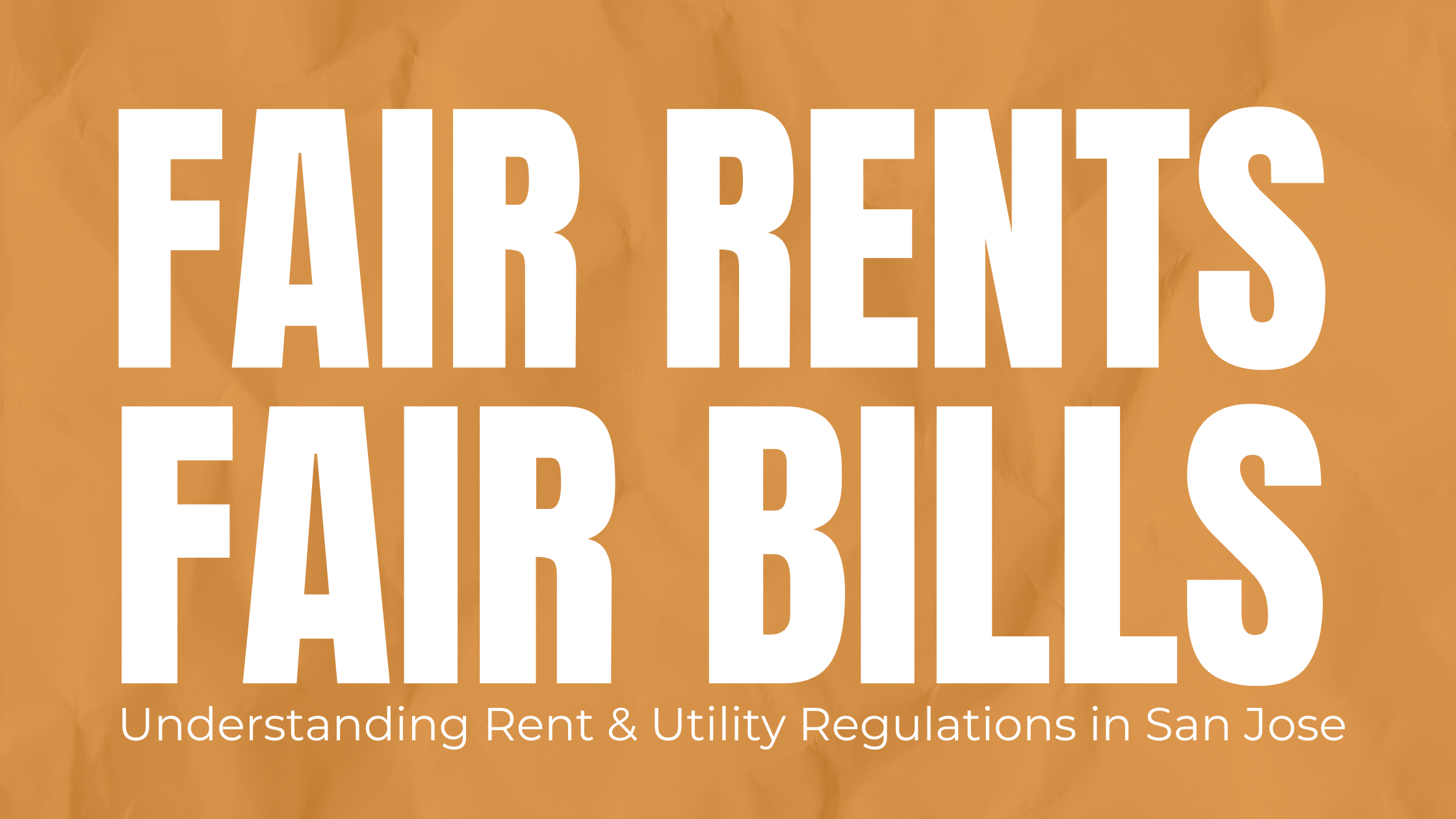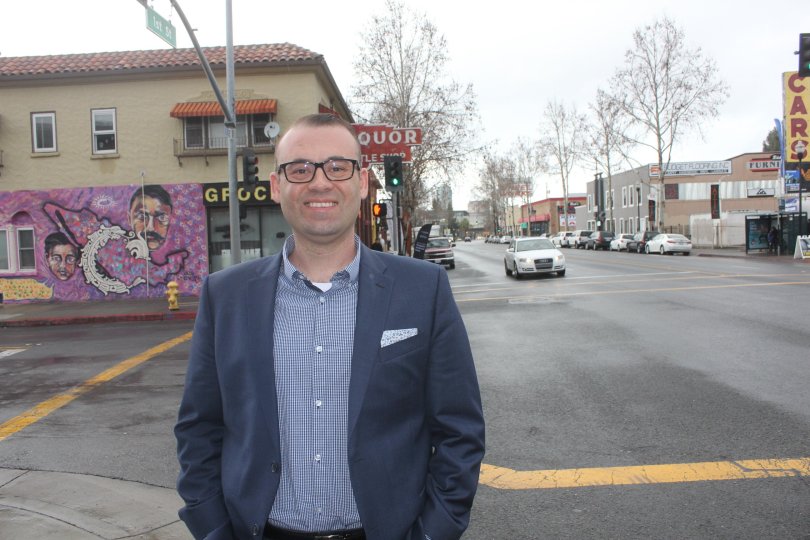Silicon Valley at Home (SV@Home) Board Member Javier Gonzalez, who is Google South Bay’s government affairs and public policy manager, talks about the company’s plans for an office and housing complex near Diridon Station in San Jose with San Jose Mercury News reporter George Avalos.
A lifelong resident of San Jose, Gonzalez has witnessed significant changes in his home town and now is on the front lines of Google’s game-changer of a plan to develop a big swath of downtown San Jose next to and near the Diridon train station. Mountain View-based Google is crafting a transit-oriented community consisting of millions of square feet of offices for 15,000 to 20,000 employees of the search giant, along with residences, retail, restaurants and open spaces that would be integrated with nearby neighborhoods. This news organization recently sat down with Gonzalez, Google government affairs & public policy manager, to discuss Google’s plans for community engagement regarding the far-reaching plan and what it means for the nation’s 10th-largest city.
See the original story at the San Jose Mercury News.
Google’s Javier Gonzalez: Google village should be ‘anchored in San Jose’s culture’
By George Avalos
Javier Gonzalez, a lifelong resident of San Jose, has witnessed significant changes in his hometown. Now, he is on the front lines of Google’s game-changing plan to develop a big swath of downtown San Jose near the Diridon train station.
Mountain View-based Google aims to build a transit-oriented community with millions of square feet of offices for 15,000 to 20,000 employees, along with housing, retail, restaurants and open spaces that would be integrated with nearby neighborhoods. This news organization recently sat down with Gonzalez, Google’s government affairs and public policy manager, to discuss the search giant’s plans for engaging with the community about the project and what it means for the nation’s 10th-largest city.
Q: You became engaged with the Washington Community Youth Center and Biblioteca Latinoamericana from their early stages. What was that involvement like?
A: I was born and raised in San Jose, and I grew up not far from the Diridon Station and was very active as a teenager in my community. I recognized that my neighborhood had many challenges and I got involved with my neighborhood association. Along with other community leaders, I advocated for more resources. We wanted to see a new community center and a new library.
Q: It sounds like it was a passion of yours to be engaged with a community.
A: I was in roughly eighth or ninth grade. I found an opportunity to work here at the Washington Youth Center as a specialist working with youth and at-risk families.
Q: How did you come to work for Google?
A: I was professionally employed. I had worked for elected officials with a focus on community affairs, community engagement in San Jose. The opportunity came, Google reached out to see if I was interested. They were looking for somebody from Santa Clara County who understood the community. I realized I could bring a lot of value to the company.
Q: When a company like Google reaches out to you, where is the over-under set on deciding to go for it — five minutes, five hours, five days?
A: I took about 48 hours to decide this was the right opportunity. I discussed it with family and friends. Ultimately, I decided this was a great opportunity and that I could have an impact with the company by bringing it my local knowledge of the community, and I went through the hiring process.
Q: What were the first community engagement efforts you have undertaken for Google?
A: The first one was our Charleston East project (Mountain View), and the next one was advocating for the company on 10,000 housing units in North Bayshore (Mountain View).
Q: What was your reaction when you learned you were being assigned the Diridon Station outreach?
A: I was excited. It is down the street from where my parents live and I grew up. It is a chance to bring all of those voices and all the aspirations and thoughts of my community to conversations both internally and externally.
Q: What is your reaction to groups like Silicon Valley Rising and the skepticism about this project that has arisen in some circles?
A: It’s great that the community engagement has kicked off. It is Google’s intention to have a very robust discussion, to make sure that everyone — nonprofits, residents, small business owners, educators — all have an opportunity to share their aspirations, their goals, their concerns through an open and transparent process.
Q: Is it disappointing that there is so much vocal opposition to this, or does that just come with the territory?
A: We want to hear the various voices. Any project or development should be thoroughly discussed and anchored in San Jose’s culture.
Q: What are your thoughts about being able to make a difference in San Jose with this project?
A: I had an early exposure to technology and computers in the public schools I attended. So that has come full circle for me to be working for Google and to help create those opportunities for us and others. We know that providing technology training for students and job-training skills for adults will be part of this vision for Diridon Station.
Q: With the worsening traffic problems and rising housing costs, and the challenges of attracting skilled employees, how important is it for Google to get Diridon Station right in a transit setting rather than yet another suburban campus?
A: I’ve had many discussions with family and friends about this development. They are excited, but they also do have concerns, as I do. Housing costs, and transportation issues. Being next to Diridon Station allows Google to create a mixed-use development community that will include housing, office space and retail space. Hopefully, that vision realizes that we can get people out of their cars and using public transportation. The idea is to create a transit-oriented, walkable community where people can walk to work.
Q: Will the completed development, the physical project, be engaged with the community?
A: Absolutely. Whatever development we ultimately build, with feedback from the community and its leaders, will be an open development. People will have an opportunity to hang out in its plazas, patronize its retail and restaurants, have places that are open to the public, with connecting trails and bike paths. Those will be elements that will be accessible to the community.
Q: If you were in ninth grade today and you had heard about Google’s proposal, what would be your reaction to the proposal?
A: I would be excited, but I would also want an opportunity to work at Google. Not only am I a Googler, but I’m also a resident of San Jose. Through my role, I’m in a unique position. Recently, the Catholic Charities after-school program at Darling Elementary received a $325,000 grant for a three-year period to help support their staff initiative for STEM-focused activities. That way, kids can be comfortable with these tools so they can be the next CEO of Google. We were at Dorsa Elementary School in November to teach them coding. I was very impressed. Within minutes, these kids were on their own, doing coding. We are all born equal. It’s all about the opportunities.
Q: How do you assess Google’s interface with San Jose Mayor Liccardo and other city officials?
A: The partnership and the engagement with the city has been very positive. They made it clear they wanted a robust community engagement process, and we did also. Other neighborhood leaders have expressed interest and support for our project.
Q: What will downtown San Jose be like when Google employees start to move into their new offices near Diridon Station?
A: Downtown has come a long way with more residential units in the area that have supported and attracted new businesses to the area. There is great potential. There is great synergy. The city wants to connect the west side and east side of the downtown and create a much larger downtown. We are happy to be part of that excitement and potentially bring something that will create a world-class destination location for downtown San Jose. We hope that people will hop on the trains to get to the Diridon area, to fly into the airport and want to get to downtown San Jose. We want our downtown San Jose project, like our other campuses, to be open to everyone who wants to be part of Google and part of this experience.
Javier Gonzalez profile:
Position: Government Affairs & Public Policy Manager, Google LLC.
Age: 36.
Birthplace: San Jose, CA.
Residence: San Jose, CA.
Education: Bachelor of Science in Political Science, Santa Clara University.
5 things about Javier Gonzalez:
Loves to travel — Central America is next on his list.
Is a lifelong 49ers, Dodgers, Warriors, Chivas and Earthquakes fan.
Loves spending time with his godchildren, friends and family.
Met President Barack Obama at the White House in 2011.
His favorite dish in San Jose is the “Tommy’s Special” roll at Yuki Sushi in Willow Glen.

